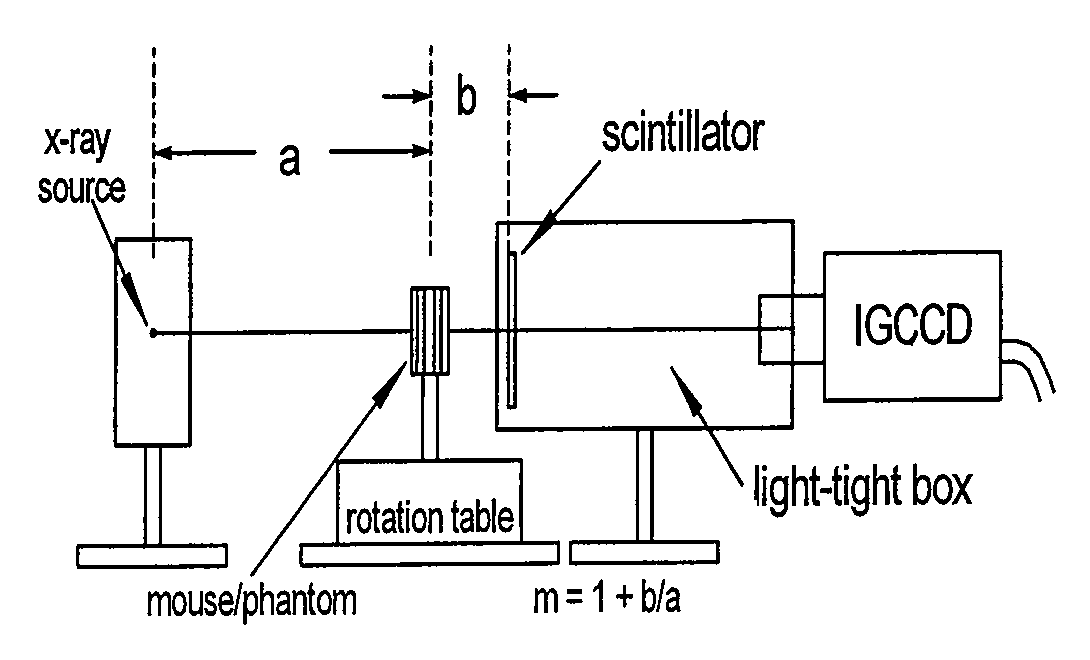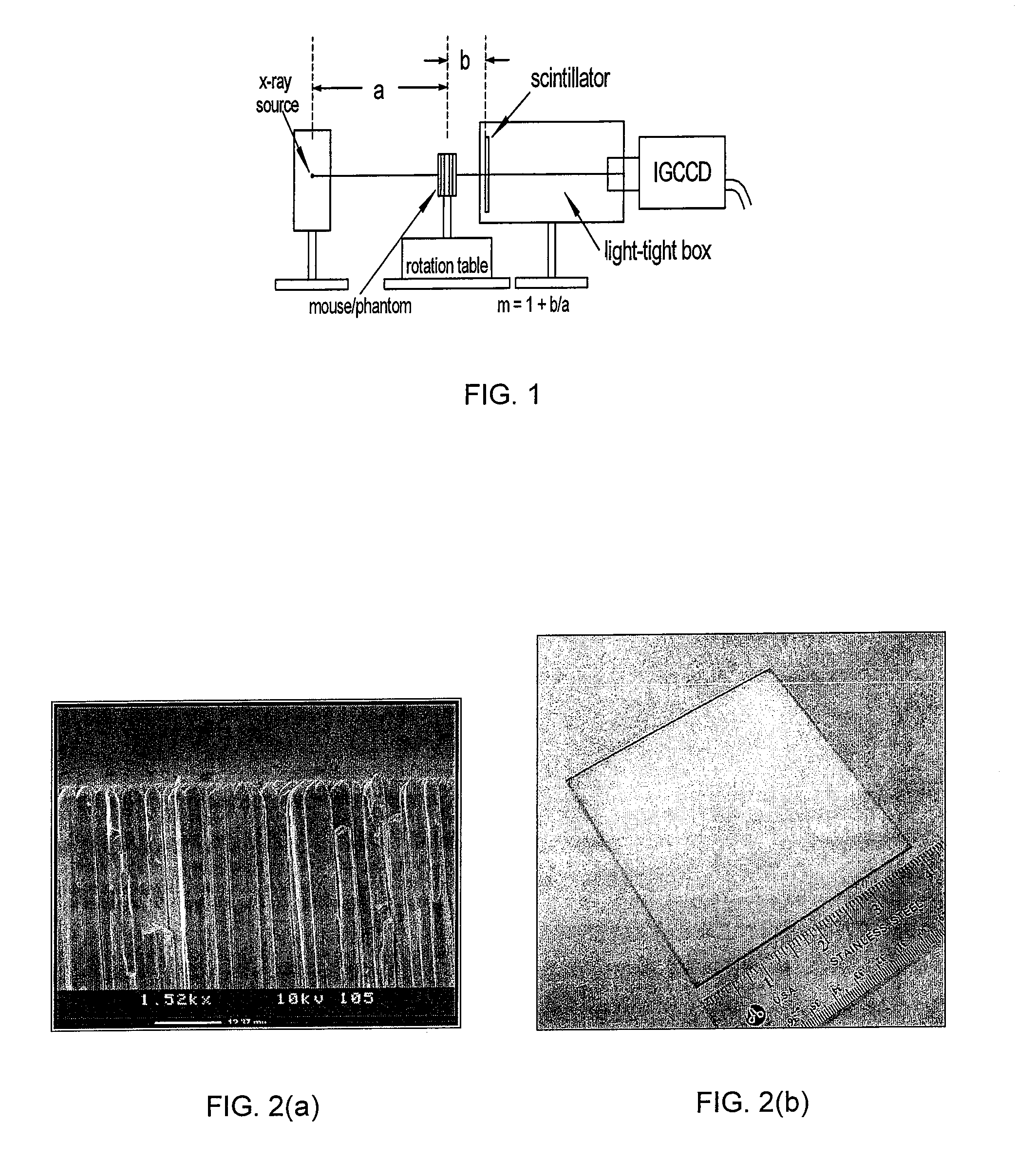Micro CT scanners incorporating internal gain charge-coupled devices
a micro-ct scanner and charge-coupled technology, applied in the field of imaging systems, can solve the problems of cumbersome system operation, difficult use of this powerful modality for functional studies such as tumor vascular physiology or involving true whole organ physiology imaging, etc., and achieve the effect of improving imaging capabilities
- Summary
- Abstract
- Description
- Claims
- Application Information
AI Technical Summary
Benefits of technology
Problems solved by technology
Method used
Image
Examples
Embodiment Construction
[0045]FIG. 1 schematically illustrates a high speed CT scanner system that is encompassed by the present invention. The CT scanner system generally comprises a source of penetrating radiation (e.g., x-ray source—typically an x-ray tube), an assembly for either rotating the x-ray source around the subject or for rotating the subject; a detector assembly; associated processing electronics; and a computer and software for image reconstruction, display, manipulation, post-acquisition calculations, storage and retrieval. The detectors may either be stationary or the detectors may be rotating. Alternatively, the CT system may include means to rotate a subject placed within the imaging volume and the CT assembly would then remain fixed in space.
[0046]The detector assembly can vary in the detection principles. For instance, some CT scanners have used gas detectors, where x-rays are converted to ionization electrons and positive ions in the gas, which then drift and are collected at electrod...
PUM
 Login to View More
Login to View More Abstract
Description
Claims
Application Information
 Login to View More
Login to View More - R&D
- Intellectual Property
- Life Sciences
- Materials
- Tech Scout
- Unparalleled Data Quality
- Higher Quality Content
- 60% Fewer Hallucinations
Browse by: Latest US Patents, China's latest patents, Technical Efficacy Thesaurus, Application Domain, Technology Topic, Popular Technical Reports.
© 2025 PatSnap. All rights reserved.Legal|Privacy policy|Modern Slavery Act Transparency Statement|Sitemap|About US| Contact US: help@patsnap.com



